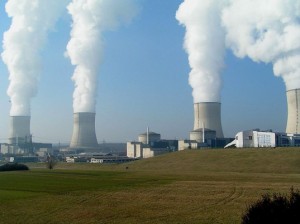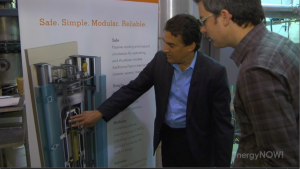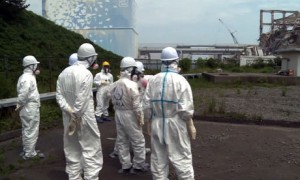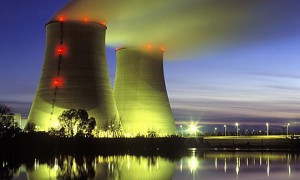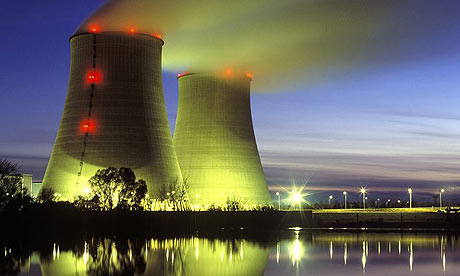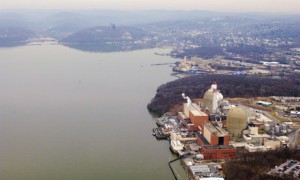Getting old isn’t pleasant: things start to creak or stop working all together. The good news, you would think, in the case of nuclear power plants is that you can replace worn, corroded or cracked parts with new ones.
But an impressive year-long investigation into the US nuclear power industry by Associated Press reveals how the regulators and the industry have repeatedly found a much simpler solution to ageing: weaken the safety standards until the creaking plants meet them.
On yesterday’s post, some commenters argued the engineering safety issue is not unique to nuclear power, meaning it is unfair to criticise the nuclear industry for failings that pass unnoticed elsewhere. I disagree for the simple reason that the stakes are so vastly higher for nuclear reactors: safety standards have to be far more stringent because the consequences of serious accidents have such huge economic and social costs. Remember, the pact you sign when you build a reactor is to control that atomic inferno for decades and then look after the waste for thousands of years.
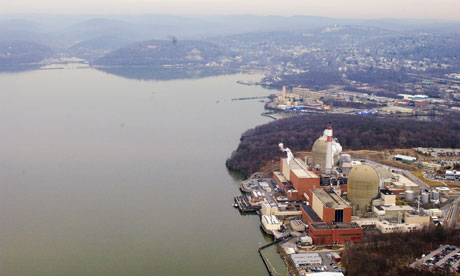
The reactors at the Indian Point nuclear power plant, on the banks of the Hudson River in New York state, first operated in 1974 and 1976. Photograph: Susan Watts/Getty Images
That leads to the point that underlies the AP investigation. The incentive to maintain costly safety regimes runs entirely counter to the primary incentive of the nuclear power plant operators, which, perfectly reasonably, is to make money. The problem comes when, as years roll by without serious incidents, that heavy, expensive regulation starts to look like an unnecessary burden.
And that’s exactly what AP’s reporters found:
Federal regulators have been working closely with the US nuclear power industry to keep the nation’s ageing reactors operating within safety standards by repeatedly weakening those standards, or simply failing to enforce them. Time after time, officials at the US Nuclear Regulatory Commission (NRC) have decided that original regulations were too strict, arguing that safety margins could be eased without peril, according to records and interviews.
Examples abound. When valves leaked, more leakage was allowed — up to 20 times the original limit. When rampant cracking caused radioactive leaks from steam generator tubing, an easier test of the tubes was devised, so plants could meet standards.
Failed cables. Busted seals. Broken nozzles, clogged screens, cracked concrete, dented containers, corroded metals and rusty underground pipes — all of these and thousands of other problems linked to ageing were uncovered. And all of them could escalate dangers in the event of an accident.
Yet despite the many problems linked to ageing, not a single official body in government or industry has studied the overall frequency and potential impact on safety of such breakdowns in recent years, even as the NRC has extended the licenses of dozens of reactors.
The problem of ageing is another where the incentive to close old reactors down in favour of newer, safer reactors is easily overwhelmed by the incentive to keep it running. The plant exists and the capital costs are paid off, so as long you can sell the electricity for more than the maintenance costs, you have a money-printing machine.
At the time, the 30 to 40 year licences granted to nuclear power plants were seen as the absolute maximum period for which they would run: the period matched their design lifetimes. Now, AP found, 66 of the 104 operating units in the US have been relicenced for 20 extra years, with applications being considered for 16 more.
Globally, the oldest operational nuclear power plant is in the UK: the 44-year-old Oldbury reactors, 15 miles north of Bristol on the bank of the river Severn. Of the 440 reactors in the world, 22 are older than 40 years, and 163 are older than 30 years.
AP quote NRC chief spokesman Eliot Brenner defending the licence extensions: “When a plant gets to be 40 years old, about the only thing that’s 40 years old is the ink on the license. Most, if not all of the major components, will have been changed out.”
But a former NRC head, Ivan Selin, has a different view. “It’s as if we were all driving Model T’s today and trying to bring them up to current mileage standards.”
So here’s the choice. You can back nuclear, an industry far more inherently dangerous than its rivals, with a history of capturing its safety regulators and dumping its costs on taxpayers. Or you can do all you can to back energy efficiency, renewable energy and energy storage plans.

 Follow
Follow

